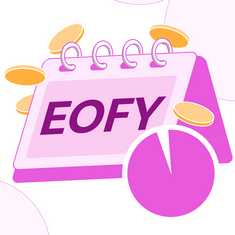
Boosting traffic to your nonprofit’s online donation page is crucial for growing your online fundraising. Here are five effective ways to increase traffic.
Fundraising campaigns vary in their goals and strategies, but they all have one thing in common: their success relies on generating sufficient awareness. Awareness is always the first hurdle you have to face before you can start seeing real fundraising results.
Your online fundraising campaigns are no different. To get more people using your online donation page, you must spread awareness of the form.
In this post, we’ll cover a few best practices for driving more traffic to your online donation form:
- Embed your donation form into your website.
- Use eye-catching CTAs.
- Promote your page using Google Ads.
- Ask supporters to share your page.
- Increase urgency around your request.
According to Kanopi’s guide to the best nonprofit websites, top sites keep their donation opportunities front and center. When you combine fundraising-oriented web design with effective promotional strategies, you can start increasing attention surrounding your giving page.
1. Embed your donation form into your website.
Sending visitors to a third-party website to donate can make them feel more uncertain about the security of your donation process. Potential donors might see the unfamiliar branding and the name of the third-party organisation and feel unsure about where their donations are really going.
Instead, embed your donation page into your website to make it easier to access. Top content management systems like Drupal and WordPress offer plenty of templates, plugins, and integrations to help you create a streamlined, well-designed donation page. If your website template doesn’t already offer a donation form option, explore these tools to build a new custom form for your site. Your online giving platform may also offer branded donation forms to embed on your website. For example, Raisely offers mobile-friendly donation pages to help you maximise online giving.
Create an even more trustworthy, reassuring donor experience by branding the form with your organisation’s logo, colors, and fonts. In addition, offer a variety of payment options, including card, PayPal, Venmo, bank transfer, and any other forms of payment your online donation system supports. This provides donors with more convenience and control over how they want to give.
2. Use eye-catching website CTAs.
Your website should feature a variety of calls to action (CTAs) that lead visitors to your online donation form. CTAs direct your potential donors to the online giving process faster, creating a smoother donor journey.
Here are a few ideas for different types of CTAs to use across your website:
- A prominent “donate” button in your header/top-level menu. Design your donation button with a striking, easy-to-read color combination, such as white text on a red background. Color contrast is particularly important when considering the accessibility of your website for those with visual impairments.
- CTAs for different types of donors. Highlight the different donation types that your organisation accepts to appeal to a broader range of potential givers. Use your CTAs to spotlight monthly donations, in-kind donations, stock contributions, planned gifts, and any other donation types that you accept.
- Links throughout important website pages. Include links to your online donation page on high-visibility pages like your about page, community testimonials page, or educational blog posts. If supporters feel inspired by any of these informational pages, they can easily head directly to your donation page to give.
For example, let’s say you’re redesigning your university’s website to draw more attention to your donation page. You might include a prominent “Give” button in your top-level menu as the Loyola website does. And, you might create a “Ways to Give” page that highlights all of your donation options, like this one from the University of Arizona website.
Consider your organisation’s unique online engagement and fundraising goals to determine how to design your CTAs for maximum effectiveness.
3. Promote your page using Google Ads.
Digital advertising can be highly effective for driving donations, especially when you pursue targeted strategies like Google Ad promotion. Google Ads are the sponsored posts that appear at the top of search results pages.
Nonprofits can apply for the Google Ad Grant program to earn $10,000 per month to spend on Google advertising. Your organisation is eligible for this program if you hold current and valid charity status in your country, have a high-quality, functional website, and meet the program’s stated policies.
If you’re accepted into the Google Ad Grant program, there are a few best practices you can follow to drive more traffic to your giving form. Crowd101’s guide to Google Ad Grants recommends:
- Bidding on keywords relevant to your nonprofit’s fundraising efforts. For example, if you’re looking to drive traffic to your donation page to raise funding for your local conservation efforts, you might bid on keywords like “environmental nonprofit in [your city’s name]” or “how to support local conservation.”
- Optimising your donation landing page. Ensure your donation page is well-designed and streamlined. Only ask for necessary information, such as supporters’ names, payment details, and contact information, to make the form easier to fill out. Also, include a quick description of your fundraising purpose and goals, along with a couple of engaging images, to remind donors of the importance of their gifts.
- Maintaining compliance with the program’s regulations. For example, Google requires you to maintain at least a 5% click-through rate (CTR) for your ads to remain in the program. This ensures that your ads are actually relevant to users. Adjust your strategy to target different keywords if your ads aren’t seeing a high CTR.
Support your Google Ad campaigns with organic SEO strategies. Optimise your website’s content for specific keywords and ensure your meta descriptions, alt text, and headings include natural keyword mentions.
Both Google Ads and organic SEO efforts can drive more traffic to your website and donation form, helping you connect with the audience searching for terms relevant to your organisation.
4. Ask supporters to share your page.
Your existing supporters are often willing and excited to help your organisation whenever you need it. That’s why you shouldn’t hesitate to ask your current donors, volunteers, and other supporters to share your donation page with their family members and friends.
When your supporters promote your online giving opportunities, you can reach a wider audience of potential new supporters and raise more. Plus, people are often more likely to give if they’re doing so to support someone they’re close with.
Ask supporters to share your page in the following ways:
- Through social media campaigns and challenges. One example of a well-known social media challenge is the ALS Ice Bucket Challenge. You can create your own challenge by asking participants to take a video of themselves doing something, like completing an exercise challenge or a dare. Then, they’ll share the video on social media, along with a link to your online donation page. They’ll tag family members and friends in the video to ask them to complete the challenge and donate to your cause.
- General awareness campaigns. Recruit a group of dedicated, long-term supporters to be ambassadors for your cause. Equip them with a variety of marketing ideas and materials, such as social media and email templates. Incentivise supporters to get involved in the program by offering a few perks, such as free merchandise, shoutouts in your organisation’s newsletters and social media posts, and access to exclusive opportunities, such as ambassador networking events.
- After they make donations. Offer social media sharing buttons on your donation confirmation page and encourage donors to post about their donations on social media. Comment and like their posts from your organisation’s main social media accounts to show your appreciation.
Make sure to thank supporters every time they help promote your fundraising opportunities. Send them a quick handwritten thank you note, call them up if you have their phone number, or send them an unexpected gift to express your gratitude. This can incentivise them to keep spreading awareness of your fundraising efforts, increasing awareness of your donation page.
5. Increase urgency around your request.
Some donors will give without prompting. But it’s immensely helpful if you can increase the urgency surrounding your donation appeal to capture the attention of other website visitors.
By increasing the urgency of your request, you give donors a reason to donate now, rather than putting it off. Here are a few ways you can make your donation request more urgent:
- Ask supporters to give now to reach a specific, time-sensitive fundraising goal. This can be an effective strategy for your annual giving day event. Let supporters know how much time they have left to help you reach your giving day goal with a countdown timer on your website. A fundraising thermometer is also a great way to motivate your supporters to give.
- Let supporters know about a donation match opportunity. For instance, individual major donors or corporate partners might offer to match all donations made within a specific time frame. Knowing that their donation will be matched can inspire donors to give because their contribution will have a more significant impact. If your organisation is using Raisely, you can easily implement matched giving and amplify your funds!
- Connect your donation request to current events. Perhaps a major development in your nonprofit’s research area was just announced and you’re looking for funding to act on the new insights. Or, maybe a new international law just went into effect that will have a negative impact on the people your organisation seeks to help. Explain why current events impact your fundraising efforts and encourage donors to use the opportunity to give now.
You can incorporate these types of donation requests into all of your marketing materials, including your website CTAs, email newsletters, social media posts, and even your direct mail outreach. This allows you to reach different audiences with your time-sensitive or urgent appeal.
As your tool for gathering online donations, your donation page is your most important digital fundraising hub. By using these strategies to drive greater awareness and use of your page, you can start receiving a steady stream of donations from this source.
Stay in the loop. Delivered to your inbox twice a month.

As Founder and CEO of Kanopi Studios, Anne enjoys helping clients identify their problems, and then empowering the Kanopi team to execute great solutions.




